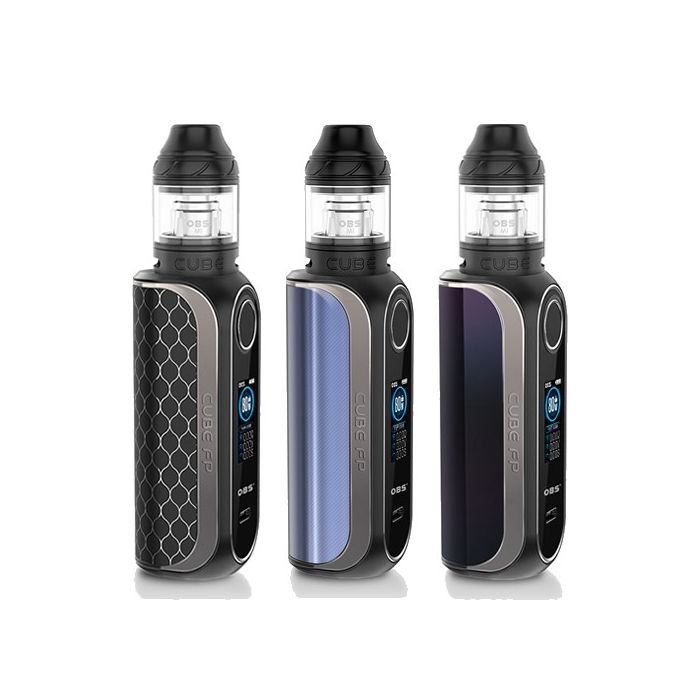Preventative Measures
- Also in TR Innovation Print Edition
- April 1, 2022
- 0
- 4
- 13 minutes read


Innovations in technology and regulation could help ease the concerns surrounding youth access to vaping products.
By Timothy S. Donahue
Most tobacco control experts agree that vaping is safer than smoking combustible cigarettes. The primary concern for anti-vaping groups, legislators and regulatory officials isn’t where e-cigarettes fall on the continuum of risk; it’s about preventing youth access to nicotine products, whether underage is defined as under age 21, as it is in the United States, or as under age 18, as it is in many other markets. The best way to prevent youth access is through innovative technology, according to vapor industry experts. Technology and regulatory policies will both be required for the vaping industry to satisfy its skeptics.
Technological innovations have been the vaping industry’s primary contribution to battling youth access. Several companies have developed devices that use biometrics, such as fingerprint and facial recognition. The OBS Cube FP Kit, for example, uses fingerprint recognition to prevent unauthorized use. However, a 2020 review by ecigclick.com found the fingerprinting function complicated to configure. “The instruction manual is total pants … it really is,” the reviewer wrote. “So far, I haven’t worked out how to use the fingerprint stuff; there are diagrams in the book which relate to bugger all on the actual device.”
Juul Labs launched its C1 in Canada in 2019. The device paired with an Android smartphone to limit who could use it and to provide monitoring of what and how often the user vaped. Juul says the C1 could only be used if people passed age verification and facial recognition checks. The C1 also had a system that could be set to automatically lock when it was not being used or was away from the phone to which it was linked.
Juul Labs then launched the Juul2, which had many of the same child safety features as the now discontinued C1. The Juul2 can also recognize and authenticate proprietary Juul2 pods when they’re attached, limiting the ability to use counterfeit pods or refill pods with other substances, such as THC.

Steven Yang, senior director of FEELM R&D, says that FEELM has incorporated designs into its products that prevent misuse by children, for example, by requiring the user to follow a specific sequence of procedures to activate the device.
“With a number of [the] industry’s leading patents, FEELM is exploring ways to integrate Bluetooth, fingerprint, airflow switch, sensor and other electronic technologies to create a child lock on products,” Yang says, adding that many Chinese vaping industry leaders have already adopted ID verification and facial recognition technologies.
“FEELM’s strategic partner and China’s leading vape brand, RELX, has initiated Sunflower System in 2019. Based on AI and big data, the Sunflower System is integrated into different scenarios, such as RELX chain stores and the RELX app to prevent minors from purchasing vaping products,” explains Yang. “The Sunflower System has been extended to all RELX chain stores in China to ensure each purchase order is traceable. Moreover, through big data and GPS, the Sunflower System can automatically filter the addresses that do not meet the legal requirements of opening a vape store—for example, near schools.”
Project Sunflower consists of adopting ID and facial recognition technologies to ensure that only adults can purchase products in its Chinese stores, according to RELX. Minors are not allowed to enter RELX stores, and in-store face-scanning cameras send alerts to RELX store staff if a suspected minor enters the store. Any suspected minor that is not able to present legal, valid ID proving his or her age is asked to leave the RELX store.
Upon purchasing a product, RELX customers also need to verify their age through a facial recognition process that matches the customer’s face with the photo on the customer’s Resident Identity Card,” says a RELX representative. “This process is to ensure that the person in the store is using their own valid identification and not attempting to impersonate an adult.”
While facial recognition measures are widely used and accepted in China, they may encounter resistance elsewhere. Chris Howard, vice president, general counsel and chief compliance officer for E-Alternative Solutions, a U.S.-based e-cigarette manufacturer, says that consumers have generally accepted biometric controls in phones, tablets and other devices that use fingerprints or faces to unlock the screens.
Those who are tech savvy would likely welcome such an alternative in their vaping products, he says. However, traditional cigarettes don’t have any electronic controls to prevent unlawful use, so if vaping regulations follow tobacco rules, that would limit these types of innovations.

“The idea that such a requirement would be necessary for vapor products to receive marketing orders seems unlikely. It is important to remember that adult smokers may be unwilling to deal with an electronically locked tobacco product,” says Howard. “While some may enjoy the novelty, many may just use a tobacco product—likely higher risk—that is easier to use. Many questions surround the use of biometrics in products. There are legal privacy issues, which would increase the cost of such devices.”
Manufacturers must also remain aware of regulatory restrictions in the markets they operate within, according to Yang. FEELM has developed protocols to help retailers and distributors comply with local guidelines. Yang says the company attaches clear warning labels on its closed-system vaping devices and includes language in user manuals stating that the products are intended for use only by adults.
“We also focus to ensure that the retail stores in which our products are sold have mechanisms in place to verify the age of the consumers purchasing products manufactured by us so as to comply with local laws and regulations in relation to age restriction,” Yang says. “Moreover, our website and our major customers’ web stores require visitors to enter their age before entering the websites.”
While technology is an important component of a comprehensive strategy to prevent youth access, experts note that the industry and its regulators should also acknowledge technology’s limitations. Having grown up with smartphones, online social networks and e-commerce, today’s youngsters are the most digitally savvy generation to date. While the technical solutions to deter underage access may deter some, sufficiently motivated young buyers are likely to overcome such measures with relatively little effort.
Regulatory Response
Taxation has long been the preferred deterrent to youth access by regulators. Studies suggest, however, that increasing taxes doesn’t always have the desired impact. Instead, these measures discourage combustible smokers from switching to a safer alternative, according to a study by Steve Pociask and Liam Sigaud for the American Consumer Institute Center for Citizen Research. The researchers state, “overzealous or poorly designed restrictions [like tax increases] on vaping, combined with misleading information about e-cigarettes’ actual health risks, are deterring smokers from pursuing a potentially life-saving alternative.”
Tim Andrews, director of Consumer Issues for Americans for Tax Reform, says that increasing taxes on reduced-risk tobacco alternatives will not reduce youth access but punish adult vaping consumers, leading many back to deadly combustible cigarettes.
“Paradoxically, by creating a booming black market, which, by definition, possesses none of the rigorous age verification processes required by legal retailers, vapor taxes may increase not decrease youth access,” he says. “Youth vaping has plummeted in recent years due to increased enforcement of existing law. [According to the U.S. Centers for Disease Control and Prevention, only 3.1 percent of high school students vape daily.] Adequate and appropriate enforcement of existing law—not increasing taxes—is what will continue to drive this number down.”
Tobacco harm reduction advocates also stress the importance of risk-proportionate pricing along with proper education about the products available to encourage smokers who cannot or will not quit nicotine to consider alternatives that are less harmful than cigarettes. By taxing the most harmful products—combustible cigarettes—at significantly higher levels than reduced-risk alternatives, regulators can nudge consumers to the least unhealthy options.

Other innovative regulatory responses to youth vaping have had mixed results. Outside taxation and Tobacco 21 laws in the U.S., any effectiveness seems hard to prove. Research suggests that there are few studies available that show what impact differing regulatory actions have on youth vaping. A study published in BMC Public Health, “Policies that limit youth access and exposure to tobacco: a scientific neglect of the first stages of the policy process,” examined 200 international peer-reviewed articles. The researchers found that scientific evidence on the policy process for youth prevention initiatives were scarce.
“The processes influencing the adoption of youth access and exposure policies have been grossly understudied. A better understanding of the policy process is essential to understand country variations in tobacco control policy,” the researchers wrote. They then went on to suggest that “policymakers can adopt and implement various supply-side policies to limit youth access and exposure to tobacco, such as increasing the minimum age of sale, limiting the number or type of tobacco outlets or banning the display of tobacco products.”
Howard questions whether regulations limiting the number of tobacco outlets/vape shops or display bans would materially impact youth access. “Which companies should lose their business licenses? Should only major chains, with arguably more control over storefronts, be permitted to sell tobacco products?” Howard asks. “How will removal of businesses prevent youth from obtaining tobacco products? Yes, there will be [fewer] stores to find products [at], but that doesn’t mean youth vaping will decline. During the ‘youth vaping epidemic,’* Walmart, arguably the largest retail footprint in the U.S., removed vapor products from its stores—is there evidence of reduced youth vaping as a result? Finally, banning tobacco product displays may impact youth exposure to products but would also reduce adult smokers’ exposure to different, potentially less harmful products.”
Incentivizing Success
There may be more innovative options to consider in controlling youth access. Another potential avenue to curb youth access may be to require manufacturers to offer incentives to retailers to maintain good practices. B2B sales discounts or incentives for meeting certain standards is likely to go a long way toward limiting youth access, according to Howard.
“Manufacturers can incentivize limiting the number of products in a transaction to prevent straw sales, passing compliance checks, tobacco sales training and participating in the We Card program to encourage retailers to ‘up their game’ in preventing youth access,” he says.
States are slowly becoming more innovative in their regulatory approach to youth vaping. Hawaii, for example, is considering the passage of a law that would require its Department of Health (DOH) to coordinate with its Department of Education (DOE) to establish a “take back” program for students to “voluntarily dispose of electronic smoking devices, flavored tobacco or synthetic nicotine products, and tobacco products in their possession.” If passed, the rules would also require the DOH and DOE to coordinate quarterly meetings with students on addressing the youth vaping epidemic.
Many industry experts agree that the vaping industry, tobacco control community and regulators should be working together to solve the problem of youth uptake. However, that seems unlikely. It could be argued that the world’s most prominent regulator, the U.S. Food and Drug Administration’s Center for Tobacco Products (CTP), should be bringing stakeholders together to seek out common solutions to these problems. That hasn’t happened, according to Howard.
“It appears CTP felt compelled to use a club, as opposed to a scalpel, to excise youth vapor use. Banning flavored pods and blanket denials of millions of PMTAs [premarket tobacco product applications] for flavored products through sweeping MDOs [marketing denial orders] removed most industry stakeholders in just about a month,” says Howard. “While much of this was thrust upon CTP by outside forces, it is hard to imagine, when they can completely control the issue, why would CTP now resort to compromise solutions?
“CTP and the tobacco control lobby both detest those bad actors that market their products without regard to this important issue. Companies that actively follow the rules detest these bad actors too. CTP, tobacco control and the ethical side of the industry should join forces to root these bad actors out.”
*The surge in U.S. teen vaping was mainly a U.S. phenomenon. The most recent Centers for Disease Control and Prevention data suggest that episode is largely over, with both youth smoking and vaping at low levels. See https://www.cdc.gov/mmwr/volumes/71/ss/ss7105a1.htm?s_cid=ss7105a1_w.

